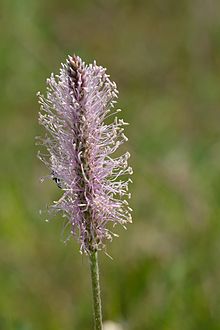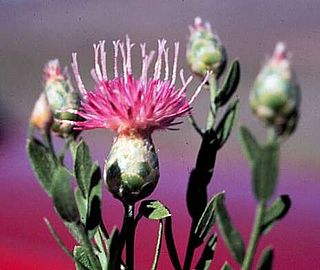
Rhaponticum repens, synonyms including Acroptilon repens and Leuzea repens, with the common name Russian knapweed, is a species of bushy rhizomatous perennial, up to 80 cm tall. Stems and leaves are finely arachnoid-tomentose becoming glabrous and green with age. The rosette leaves are oblanceolate, pinnately lobed to entire, 2–3 cm wide by 3–8 cm long. The lower cauline leaves are smaller, pinnately lobed; the upper leaves become much reduced, sessile, serrate to entire. The heads are numerous terminating the branches. Flowers are pink to purplish, the marginal ones not enlarged. The outer and middle involucral bracts are broad, striate, smooth with broadly rounded tips; the inner bracts are narrower with hairy tips. Pappus present with bristles 6–11 mm long. Fruit is a whitish, slightly ridged achene.
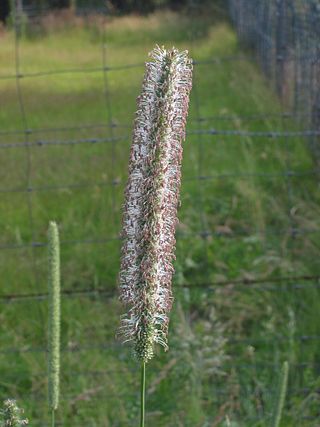
Phleum is a genus of annual and perennial plants in the grass family. The genus is native to Europe, Asia and north Africa, with one species also in North and South America.

Cephalanthus is a genus of flowering plants in the family Rubiaceae. There are five extant species that are commonly known as buttonbush.

Nauclea is a genus of flowering plants in the family Rubiaceae. The species are evergreen trees or shrubs that are native to the paleotropics. The terminal vegetative buds are usually strongly flattened. The generic name is derived from the Ancient Greek words naus, meaning "ship" and kleio, meaning "to close". It refers to the resemblance of the cells of the capsule to a ship's hull.

Picris hieracioides, or hawkweed oxtongue, is a species of flowering plant in the family Asteraceae.

Hippomane spinosa is a plant species in the family Euphorbiaceae.

Micranthes nivalis is a plant species in the saxifrage family. It is commonly called snow saxifrage or (ambiguously) alpine saxifrage.

Subularia is a genus of plants in the family Brassicaceae. Subularia species are annual herbs that grow in moist or even flooded soils. There are only two species of the genus: Subularia aquatica, which is widespread in North America and Europe; and Subularia monticola, from Africa mountains. Awlwort is a common name for plants in this genus.
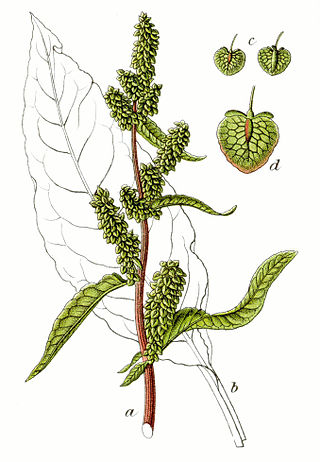
Rumex patientia, known as patience dock, garden patience, herb patience, or monk's rhubarb, is a herbaceous perennial flowering plant belonging to the family Polygonaceae. In spring it is often consumed as a leaf vegetable and as a filling in pies in Southern Europe, especially in Bulgaria, North Macedonia, Bosnia and Herzegovina and Serbia. It is also used in Romania in spring broths or sarmale.

Avicennia officinalis is a species of mangrove also known as Indian mangrove. The genus Avicennia is named after the famous Persian scientist Ibn Sina.

Asplenium viride is a species of fern known as the green spleenwort because of its green stipes and rachides. This feature easily distinguishes it from the very similar-looking maidenhair spleenwort, Asplenium trichomanes.
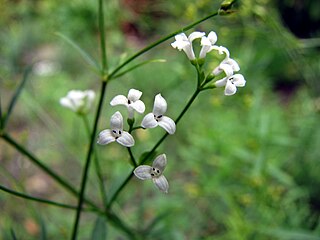
Asperula tinctoria, common name dyer's woodruff, is a plant in the family Rubiaceae, a native of much of northern and central Europe from France to Russia and also of Western Siberia.

Ceropegia candelabrum is the type species in its genus of plants, belonging the subfamily Asclepiadoideae. The Latin specific epithet candelabrum is derived from the candelabra-like appearance of the inflorescences.

Cereus hexagonus or lady of the night cactus is a species of columnar cactus found in Ecuador and Venezuela.
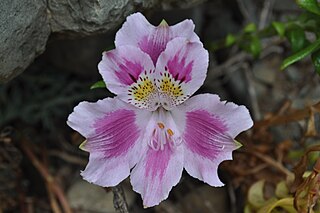
Alstroemeria pelegrina, the Peruvian lily, is a species of flowering plant in the large genus Alstroemeria of the family Alstroemeriaceae (Inca-lilies), part of the monocot order Liliales. It is the type-species of that genus, originally described by Linnaeus in 1762 as one of three species of Alstroemeria. It is a herbaceous rhizomatous perennial endemic to Chile.

Scilla lilio-hyacinthus, the Pyrenean squill, is a species of flowering plant in the genus Scilla.

Scilla amoena, the star hyacinth or squill, is a species of flowering plant in the genus Scilla.
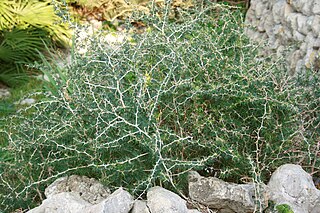
Asparagus albus is a widespread species of flowering plant in the family Asparagaceae, native to the western and central Mediterranean. It is found in the coastal maquis shrubland biome, and in ruderal situations.

Hypecoum pendulum is a species of flowering plant in the poppy family.

Cotula anthemoides is a species of flowering plant in the Aster family that is widely distributed across Africa and southern Asia. It has also been introduced to Albania, France, and Poland.

